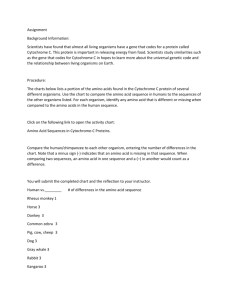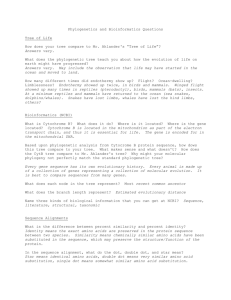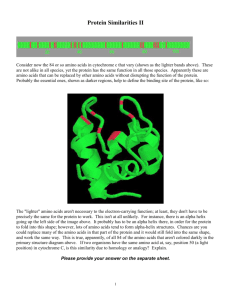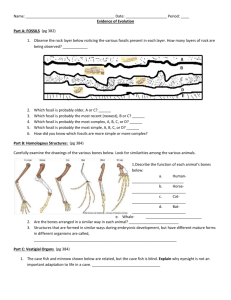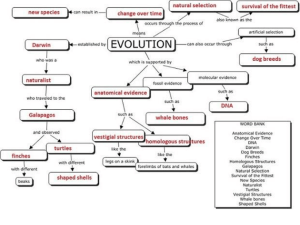EVOLUTION Name______________________________ REVIEW
advertisement
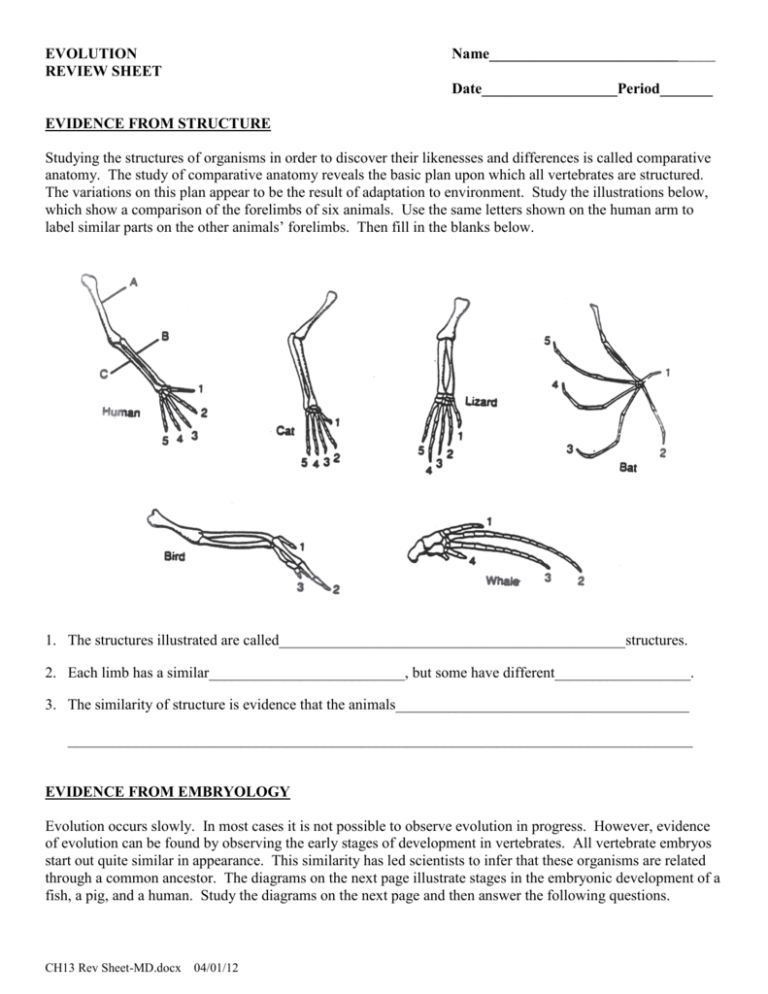
EVOLUTION REVIEW SHEET Name______________________________ Date__________________Period_______ EVIDENCE FROM STRUCTURE Studying the structures of organisms in order to discover their likenesses and differences is called comparative anatomy. The study of comparative anatomy reveals the basic plan upon which all vertebrates are structured. The variations on this plan appear to be the result of adaptation to environment. Study the illustrations below, which show a comparison of the forelimbs of six animals. Use the same letters shown on the human arm to label similar parts on the other animals’ forelimbs. Then fill in the blanks below. 1. The structures illustrated are called______________________________________________structures. 2. Each limb has a similar__________________________, but some have different__________________. 3. The similarity of structure is evidence that the animals_______________________________________ ___________________________________________________________________________________ EVIDENCE FROM EMBRYOLOGY Evolution occurs slowly. In most cases it is not possible to observe evolution in progress. However, evidence of evolution can be found by observing the early stages of development in vertebrates. All vertebrate embryos start out quite similar in appearance. This similarity has led scientists to infer that these organisms are related through a common ancestor. The diagrams on the next page illustrate stages in the embryonic development of a fish, a pig, and a human. Study the diagrams on the next page and then answer the following questions. CH13 Rev Sheet-MD.docx 04/01/12 Fish Pig Human How does a comparison of these embryos provide evidence of evolution?____________________________ _______________________________________________________________________________________ _______________________________________________________________________________________ 2. Which of the above species would be most biochemically similar to humans, the fish or the pig?__________ Why?__________________________________________________________________________________ _______________________________________________________________________________________ _______________________________________________________________________________________ _______________________________________________________________________________________ _______________________________________________________________________________________ EVIDENCE FROM MOLECULAR BIOLOGY Amino acid sequences of certain proteins can be used to determine how closely related different species are. If the amino acid sequences for a certain protein are very similar in two species, one can assume that those two species had a common ancestor. All 104 amino acids in the protein cytochrome c are identical in humans and chimpanzees. The following chart shows how many of the amino acids in cytochrome c in other animals differ from those in humans and chimpanzees. Study the chart, and answer the questions that follow. 1. Explain how this chart supports evolutionary theory. __________________________________________ __________________________________________ __________________________________________ __________________________________________ __________________________________________ __________________________________________ __________________________________________ CH13 Rev Sheet-MD.docx 04/01/12 Animal Dog Dogfish shark Rattlesnake Rhesus monkey Number of Amino Acid Differences in Cytochrome C 8 24 12 1 2
